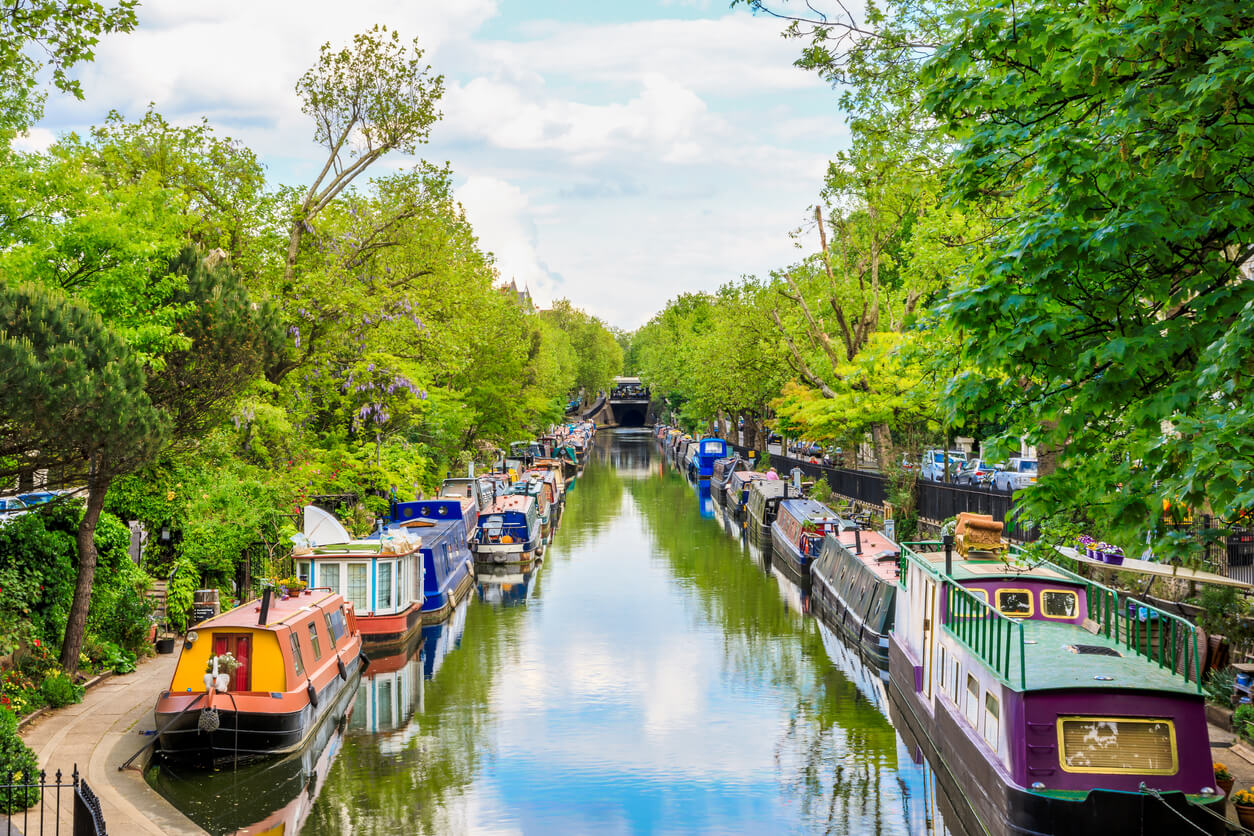Narrowboats: Rules & Top tips
11 May 2020

Whether you currently live on a narrowboat or you’re considering a lifestyle change and would like to buy one, here’s everything you ever want to know, need to know, and the reality of living on a narrowboat…
1.Narrowboat mooring spots
Securing a mooring spot is the most important task after you’ve bought a narrowboat. Home moorings cost between £2,000 and £18,000 a year - with a waiting list of five years for the most sought-after spots in London. If you have a residential mooring spot you may also have to pay basic ‘Band A’ council tax. There are 32,000 boats in Britain with licences - 5,000 of which have no home mooring.
2. Narrowboat DIY
Owning and living on a canal boat is best suited to people with a practical bent. Owners must not be afraid to attempt minor repairs to the heating, cooking and sanitation systems. A certain amount of skill with electronics would come in handy, as would the ability to identify why the generator may be misfiring or the engine stalling.
When these types of things go wrong, you’ll struggle getting a repair man out to a remote canal bank.
There are also maintenance chores to keep on top of: engine services and cleaning the bilges and water tanks.
3. Narrowboat horn signals
1 blast = going to the right
2 blasts = going to the left
3 blasts = I’m trying to stop or go backwards
4 blasts - pause - 1 blast = turning round to the right
4 blasts - pause - 2 blasts = turning round to the left
1 extra long blast = warning at tunnels, blind bends and junctions
4. Canal boat speed limits
The maximum speed on narrow canals is 4mph. On rivers and broad canals limits vary, so check local information before you set out and watch out for speed limit signs on the waterway. The non-tidal River Thames has a limit of 8.5 mph and on the River Medway it’s 5 knots (5.74 mph). You should slow down approaching bridges, locks, bends or junctions and when passing boats or anglers. And remember, whatever the limit, if you’re making waves you’re going too fast - slow down.
5. Overtaking in a narrowboat
You will rarely need to overtake on canals and narrow rivers. There isn’t usually enough space to overtake safely. So just keep your distance and stay behind. If another boat wants you to overtake, the skipper should slow down and tell you on which side to overtake - usually the left. If you’re the one overtaking, it’s your responsibility to stay clear of the other boat. Both skippers should go slowly as possible to avoid the two boats being drawn together.
Narrowboat insurance through GJW
Just bought a narrowboat? You might want to consider Narrowboat insurance - many canals and inland waterways require proof of third-party boat insurance. Get a free online quote today.
Please note the information provided on this page should not be taken as advice and has been written as a matter of opinion. For more on insurance cover and policy wording, see our homepage.
Got a question? Call our UK call centre 0151 473 8000
©Copyright Ripe Thinking Limited 2025. GJWDirect® is a registered trademark and a trading name of Ripe Insurance Services Limited which is Authorised and Regulated by the Financial Conduct Authority No.313411.
Registered office: The Royals, Altrincham Road, Manchester M22 4BJ. Registered in England No. 04507332.
